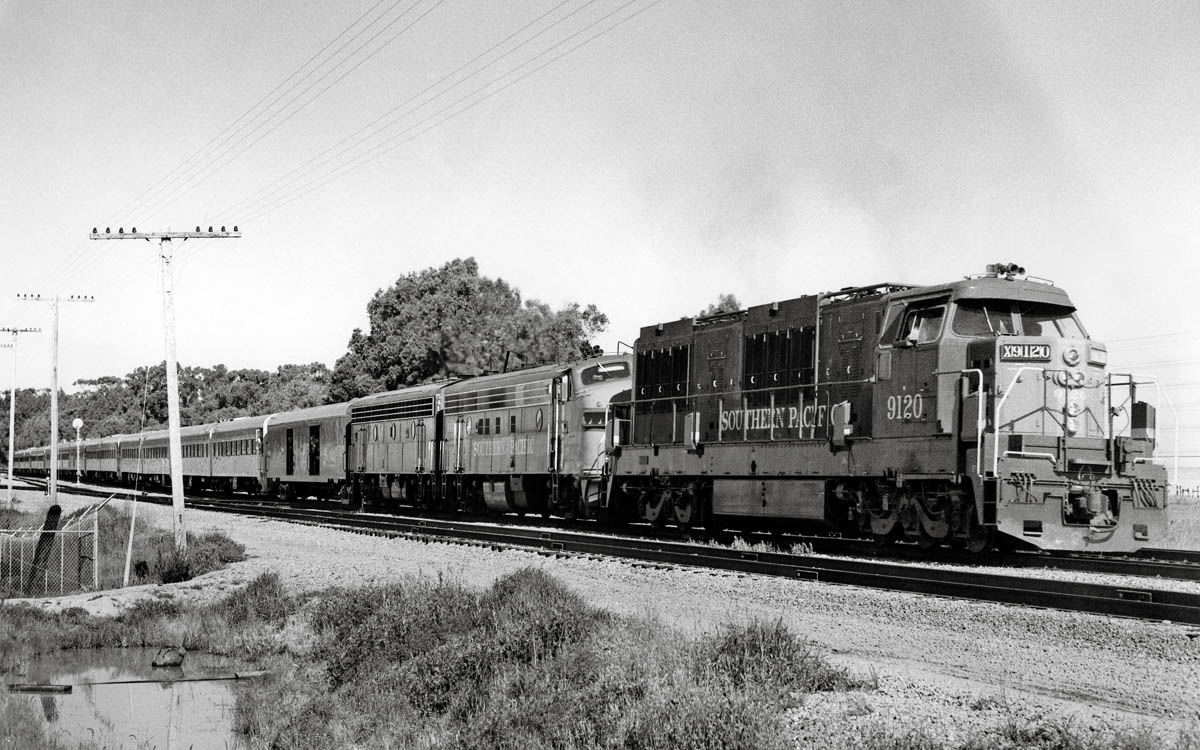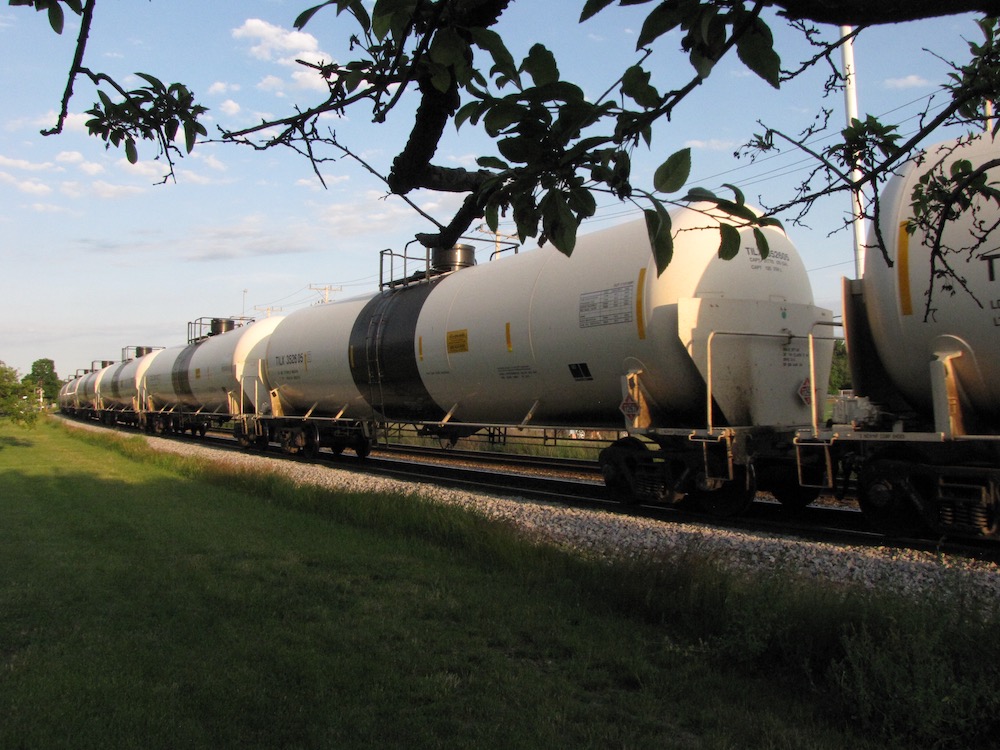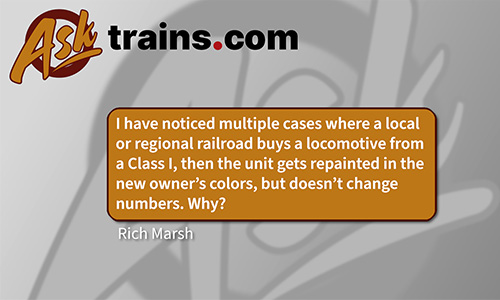A Two North American railroads purchased the 3,540-hp Krauss Maffei model ML4000 diesel-hydraulic locomotive in two varieties: Denver & Rio Grande Western and Southern Pacific. Rio Grande and SP both purchased three cab-style unit models while the latter also opted for 15 hood unit models. Rio Grande eventually sold its units to the Southern Pacific, which retired the entire fleet by the end of 1968. While the units did not last long in revenue service, they did nudge the domestic locomotive builders to develop higher horsepower models. One unit, No. 9010, survived and was converted into a special camera-equipment car to record video for the SP’s locomotive simulator. It was later donated to the California State Railroad Museum, and then acquired by the Pacific Locomotive Association in Niles, Calif., where it is now undergoing restoration for operation. – Brian Schmidt
Diesel-hydraulic locomotives
| Last updated on November 3, 2020
Ask Trains from the December 2015 issue














EVFM, also known in Brazil as Vitoria – Minas Railroad, purchased 16 meter-gauge, ML4000 locomotives from Krauss-Maffei – 4 units in 1966 and 12 more units in 1969. Using two 2,000 HP Mayback-Mercedes MD870 air-cooled engines, they were the most powerfull locomotives in service in Brazil at the time. Two ML4000 replaced five G16U haulling 150-car iron ore trains. They were early replaced by EMD´s DDM45 (meter-gauge version of the SD45) because of reliability problems and lack of spares. A good source of information about the operation of the ML4000 in Brazil is the book EFVM Locomotives Volume 2: The Diesel Fleet 1947-2003, by Memória do Trem. All pictures in the book have english captions and a good description in english of EFVM´diesels is also available in Annex III.
I remember that one of the problems with these diesels was either the crakshaft or the cam shaft wasn’t properly heat treated, leading to failures!
The SPH&TS KM book has gone into a second printing and should still be available. I purchased the first edition and indeed, is a fantastic book.
Cool looking SP locomotive
If you are looking for information in these engines the go to source is “Southern Pacific & the KM Hydraulics” published by the Southern Pacific Historical and Technical Society. Lots of diagrams, and lots of discussion about friction between European engineering and US railroad practices. It’s a really great book if you can find it at a reasonable price, unfortunately it’s out of print and the asking price for the copies that are available are simply stunning.
Volker. I notice in various websites that Voith has indeed not sold many of their Maxima 40CC locos – the era of big Diesel hydraulic power on rails seems to be over, though many of the historic smaller classes still serve daily on secondary and relatively minor lines. I suppose most big power demand these days is either on electrified lines, or served by modern DE units that roam more freely across borders.
Main emphasis in the Voith sales website these days is on railcar (Triebwagen) transmissions, and the MTU site now offers both electric and Voith transmissions in combination with their engines. The old Maybach (?) single converter & gearbox system (as used in some V200s and BR Warships) seems to have disappeared completely.
I think it would have been worthwhile if Mr. Schmidt had detailed why these locomotives were retired from service as quickly as they were. Were they considered high maintenance, or were there problems with the hydraulic propulsion system? Did they have enough tractive power for operating in tough western/mountain conditions, or were there adhesion problems? Most European trains operate with much shorter consists, so I would suggest they’re not pushed as hard. Also, are diesel-hydraulic locomotives still in production or use in Europe or elsewhere?
Michael— Thanks for the info. “Voith locomotive transmissions” in Google provided a wealth of online information. You gave me the right word to seek.
@Mark Germany (Deutsche Bahn) has mainly diesel-hydraulic locos for use on their non-electrified routes. the two main current models are the class 290 1,500 hp switcher and class 218 2,500 hp mainline (freight and passenger) loco (both have a B-B wheel arrangement). I can’t claim there are no diesel-hydraulics to be found elsewhere in Europe, but Germany is definitely their main home.
When diesels were introduced in the UK (in the 1960s), we experimented with several types of diesel-hydraulic, mostly based on German designs (they were concentrated on the former Great Western lines from London to Bristol, the West Country and Wales). They were found to be too unreliable and expensive to maintain and today almost all our diesels are diesel-electrics. Some diesel-hydraulics have been preserved and still run on private lines.
Lawrence. There’s a diagram of the Voith drive train for the US K-M locos in the book I referenced below, and a great deal more on Voith drives in all sorts of transport & machinery applications. Its out of print, but available from used book dealers. Well worth having for those interested in Voith drives and torque converters.
I’ll try to answer some questions. The ML4000 and the EMD SD45 were both rated 7.64 times their weight on Donner Pass (Colfax – Sparks). The K-Ms had an adhesion factor of 33% compared to diesel-electric locomotives with 25%.
The ML4000 experienced overheating in tunnels as did EMD locomotives which finally led to the tunnel motors.
In 1966 the 21 units had anual maintenance cost of $76,800 per unit. More than 73% of the total expense was for the Maybach engines. At the same time SP estimated the anual maintenance cost for a EMD SD45 (3,600 hp) at $43,000.
On the other hand after a rebuilt of four engines the had an availability of approx. 85%, one unit 100%.
SP used the K-Ms to nudge the domestic builders to put more horsepower into their locomotives. EMD understood and introduced the 3,600 hp SD45 in December 1965.
All together led to the early retirement.
The German Federal Railway (Deutsche Bahn) bought their last diesel-hydraulic locomotive, the Voith Gravita in 2008: https://upload.wikimedia.org/wikipedia/commons/9/97/DB_Baureihe_261_in_Hamburg-Veddeler_Damm.jpg
Voith built 20 Maxima 40CC with 4,900 hp in 2010. http://www.bahnbilder.de/1024/voith-maxima-40-cc-92-349983.jpg
But the majority are diesel-electric locomotives in Europe though Deutsche Bahn bought their first in 2011.
See ‘Voith Power Transmission – 100 Years of the Fottinger Principle’, Schweickert, Springer Verlag, 2005 (in English), pp76 – 79 for more details about these locos and the special hydraulic transmission that Voith developed for them. Krauss Maffai & Voith tried very hard to get into the US market offering far higher unit power than US makers were then able to make.
Technically the locos did the job well but the first group were fitted with high speed (1500 rpm) German engines, as used on DB, and the US maintenance teams just coudn’t get the hang of these. Nevertheless SP was very impressed with the transmission capability (installed power, by the way, was 2×2000 HP, each engine driving one truck, with all axles in a truck commonly driven, hence a C-C, not a Co-Co). Finally in 1963 SP ordered 3 locos from Alco with their medium speed engines. Power again was 2 x 2000 HP (later 2150 x 2 = 4300 HP, a power level not really reliably achieved by US builders until the AC44s). These locos (nicknamed the ‘Alcoholics’) were reported as strong & reliable and achieved 90% reliability but they remained outsiders with all the maintenance & spares issues that come with that, and they were withdrawn in 1970.This, and Alco’s bankruptcy that same year, put paid to plans for 6000HP C-C locos.
It’s obvious, though, from the book (which was written by Voith personnel, amazingly populated by Engineers at high level!) that they are still very proud of the heavy duty slogging transmission they developed for freight duties in US conditions.
Where might I find more complete descriptions on the actual drive train of these diesel-hydraluics? I assume a torque converter was used. If it was, how did it compare with automotive converters? Were there any changes of gear ratio? Was there a lock-up capability? How efficient were they with fuel in operation? How reliable was the transmission overall?